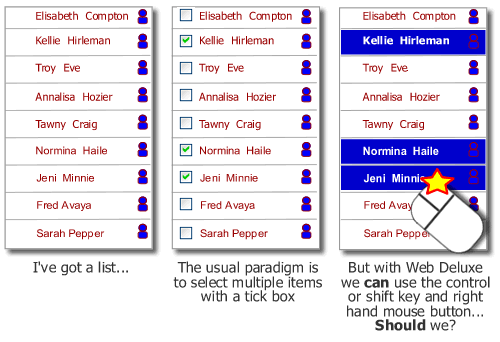Enterprise twittering
I’ve been interested in Twitter for a while now – it is probably one of the flagship web 2.0 innovations, (and its Ruby on Rails). But I’ve had a problem with it; I can’t answer the question “what’s in it for me“. What is the point of Twitter? I signed up a while ago and invited a few friends, but the responses were generally along the lines of “what’s wrong with FaceBook status” (one tweet read, “[name] doesnt understand how this is any different from his IM or facebook status). This is a good question. Instant messenger can change the way an enterprise communicates – what’s wrong with IM? Why not put your status alongside your IM ID? Staying with the enterprise theme, you can’t walk into an investment bank without seeing someone scanning their blackberry. Why would an enterprise need Twitter when eyes are glued to the ‘berry?JP Rangaswami has been blogging a series of articles on Twitter – I commented on one post asking these sorts of questions. In a follow up blog, he has answered my questions. I’m beginning to see the point of Twitter – more to the point, when I’m talking to clients about enterprise 2.0, I’ve got a more compelling Twitter story to tell. So (borrowing from JP), why Twitter?
1. Publish – subscribe. Unlike email where an author publishes a note to a group of people she feels will be interested in it, with Twitter people can choose whether to subscribe to what the author writes. If they like what they read they can continue to consume the ‘tweets’. But how is this different to subscribing to a newsgroup? With a newsgroup you can only select to subscribe to the topic, not the author. Unless you use some clever filtering, you can’t choose whose words you read. And filtering takes time and is rarely straight forward; bringing on the second point for Twitter…
2. It is easy.
3. It is multi-device. Not only do I choose who I receive tweets from, I choose how I will receive them – via SMS, email, rss etc.
4. It is succint – 140 characters is not a lot of words to write with
Anyway, an enterprise example…
Today:
Jack Fiction knows something – he’s learned a great insight about a potential client. He sends a mail to people he thinks might be interested in this insight. He includes a copy to the Business Development email interest group that was set up by IS
– It is a closed circle. People not on the cc list will never learn of the insight.
– It doesn’t mean anything to them at that time. They delete the mail. It has no history.
– Many interested people are not on the IS email list
– People who are no longer interested still get sent mails to the group.
Twitter:
Jack knows something – he’s learned a great insight about a potential client. He tweets about it.
– It is public
– It has history
Jack doesn’t need to think who will be interested in what he writes; people who value what he does subscribe to his Twitter. They can see an archive of his previous tweets on his Twitter space. If they no longer want to listen to what Jack says they unsubscribe – the UI is elegant and simple.
This model assumes thats people interested in the insight know Jack in the first place, but that is generally the way that social interactions work. Let people communicate between themselves – it is far easier to choose who you want to listen to, to who you want to talk to. And in doing this it is far easier to cut out the noise.
